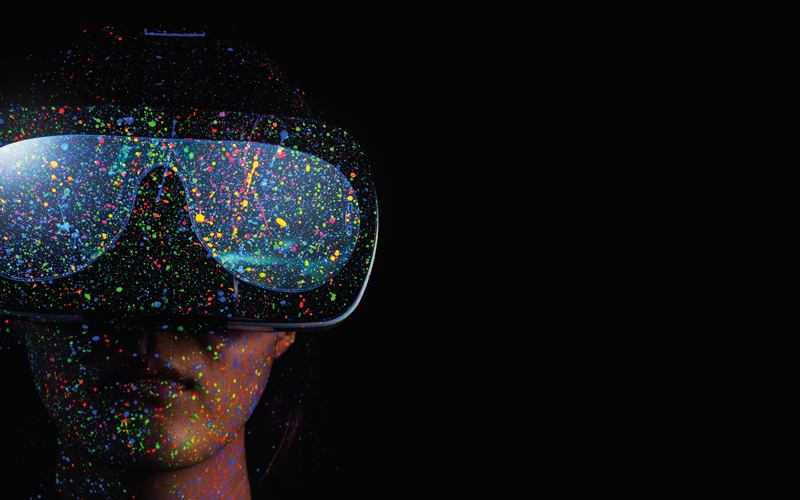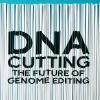Ruth Evans and Laura Eastwood from NHS Blood and Transplant discuss virtual reality training for blood transfusion testing.

At a glance
- NHSBT has released a virtual reality training app that realistically simulates the process of testing blood for lifesaving blood transfusions.
- It aims to give training an engaging, hands-on environment and increase awareness of the transfusion science and boost recruitment.
- The controller realistically recreates the sense of holding items such as the pipettes.
Busy workloads and staffing difficulties are challenges that some, if not the majority, of biomedical scientists can identify with. This, along with other factors, subsequently impacts on the training that can be delivered in laboratories.
An advisory body called the UK Transfusion Laboratory Collaborative (UKTLC) was founded in 2006 to address concerns related to transfusion laboratory training. It set up guidelines on staffing levels, qualifications, knowledge and skills expected for biomedical scientists working in transfusion laboratories. However, in the biannual surveys the UKTLC sends out to monitor training and staffing levels, it found recurring themes of pressures affecting staffing and training. In addition, it is recognised that undergraduate degrees contain minimal transfusion content, therefore, it is often the responsibility of the employing laboratory to teach trainees the required specialist transfusion knowledge and how to apply this into practice.
Is there a solution?
In 2019, the Scientific and Clinical Training and Education (SCTE) department at NHS Blood and Transplant (NHSBT) began to explore the possibility of virtual reality (VR) as a tool to support training. VR is becoming widely used for training in the healthcare community, with published evidence demonstrating that it provides a safe environment to learn procedures requiring physical dexterity, consequently reducing the number of reported errors. Importantly, it allows the trainee to make a mistake in a process and observe the patient outcome, allowing for a richer learning experience, without having any negative impact on the patient. However, there were fewer examples of VR usage within biomedical science.

What is virtual reality?
Following the release of more affordable headsets, VR is becoming increasingly popular in the mainstream. For those who are less familiar, immersive VR involves wearing a headset that places the user in a simulated environment. The user is free to move around and can use handsets to control how they interact with their environment, for example by picking up objects. VR is extremely versatile and can be used for a lot more than shooting goblins or riding a rollercoaster in your living room! A simulated laboratory environment allows for independent, practical training, ensuring all trainees receive the same high standard of training and potentially reducing the burden on trainers.

Developing the app
In 2019, NHSBT partnered with the experienced immersive learning specialists Make Real to develop a blood identification app. The aim of developing this app was to determine a proof of concept – could VR be used to train in a transfusion laboratory? The app involves performing an ABO blood group using the tile technique and then selecting the appropriate ABO group red cell unit for transfusion. Although tile techniques are not used routinely within UK transfusion laboratories, it is an excellent training tool to visualise red cell agglutination.
“It allows the trainee to make a mistake and observe the patient outcome, allowing for a richer learning experience”
The design process to create the app was fairly involved and for the optimal experience, effective and close teamwork between scientists and software designers was required. The designers visited NHSBT’s Filton site to observe the test being performed and have a go themselves. As much as software design is an unknown to biomedical scientists, transfusion science is an unknown to software designers! This meeting was essential to ensure effective communication between teams.
Following this initial meeting, a storyboard was created, similar to the process for creating a film or TV script.
It was an iterative and intense process, involving regular meetings over several weeks to review progress and ensure everything was scientifically correct with appropriate learning outcomes.
Next came the opportunity to see the first release of the product, known as the alpha release. Seeing all the thoughts and ideas discussed over weeks of planning coming to life in the alpha release was astounding.
Tiny details such as red cell agglutination happening before your eyes, and vibrations in the controller to simulate pressure when pipetting (known as haptic feedback) helped to bring the simulation to life. All the little details were captured, even down to the patient details on their wristband – an important detail to all transfusion scientists.
Once final amendments to the alpha release were completed the official voice-over could be recorded. Helping voice-over artists to pronounce scientific words in a recording studio was something new for us as biomedical scientists and definitely an interesting experience.
Since this app has been completed, it has been widely utilised, including showcasing it at IBMS Congress. With more and more NHS trusts purchasing their own VR headsets for training, this app is now available to download on the Meta App Lab store to use in your own laboratories.

Next steps
Following the successful development of the “blood identification” app, NHSBT was keen to develop further apps with a wider application in the transfusion laboratory community. Crossmatching was chosen for the next app as it can be a complex test, not only involving testing the patient’s plasma against a unit of red cells, but the biomedical scientists must know about additional factors that affect the units they select. The patient’s clinical condition, current treatments and blood group antibodies detected are just a few of the factors that can impact unit selection, with mistakes having potentially fatal consequences for the patient.
A similar process to the “blood identification” app was followed for development and design, but this time a broad group of stakeholders was involved, including biomedical scientists from different hospitals and representatives from different transfusion-related regulatory and advisory bodies. The involvement of stakeholders was vital to ensure the app is fit for purpose across UK transfusion laboratories.
“VR provides a safe environment to learn procedures requiring physical dexterity, consequently reducing reported errors”
Researching effectiveness
As VR is not widely used within the biomedical science community, it is valuable to demonstrate whether this is an effective tool for training. It is important to note that VR will not replace the laboratory trainer, but research can show how to successfully incorporate this tool into laboratory training in order to support laboratory trainers.
NHSBT is currently running a UK-wide research project comparing improvement in learning outcomes and knowledge retention when crossmatch training is delivered using standard 1-2-1 training versus the VR app. Results of an initial pilot project carried out in partnership with Manchester Metropolitan University look promising. Over 40 transfusion laboratories across the UK are currently involved and more are required to ensure meaningful data is collected.
The future
Exciting prospects are offered by using VR as a tool for training. There is the potential to develop separate apps for individual laboratory tests in biomedical science. Virtual laboratories where trainers and trainees meet up, regardless of where they are located, could be created to help with remote training. Keeping patients at the heart of biomedical science, patient stories can be incorporated, so biomedical scientists can learn the impact of their contribution to healthcare. Hopefully, the coming years will show biomedical science emerging as a pioneer of VR in healthcare-related training.
Explore Further
Download the app: bit.ly/4agBDGp
Take part in the Crossmatch Training VR Research Project: [email protected]
For further info, email: [email protected]
Image credit | Getty | Make Real NHSBT Caters Photographic




